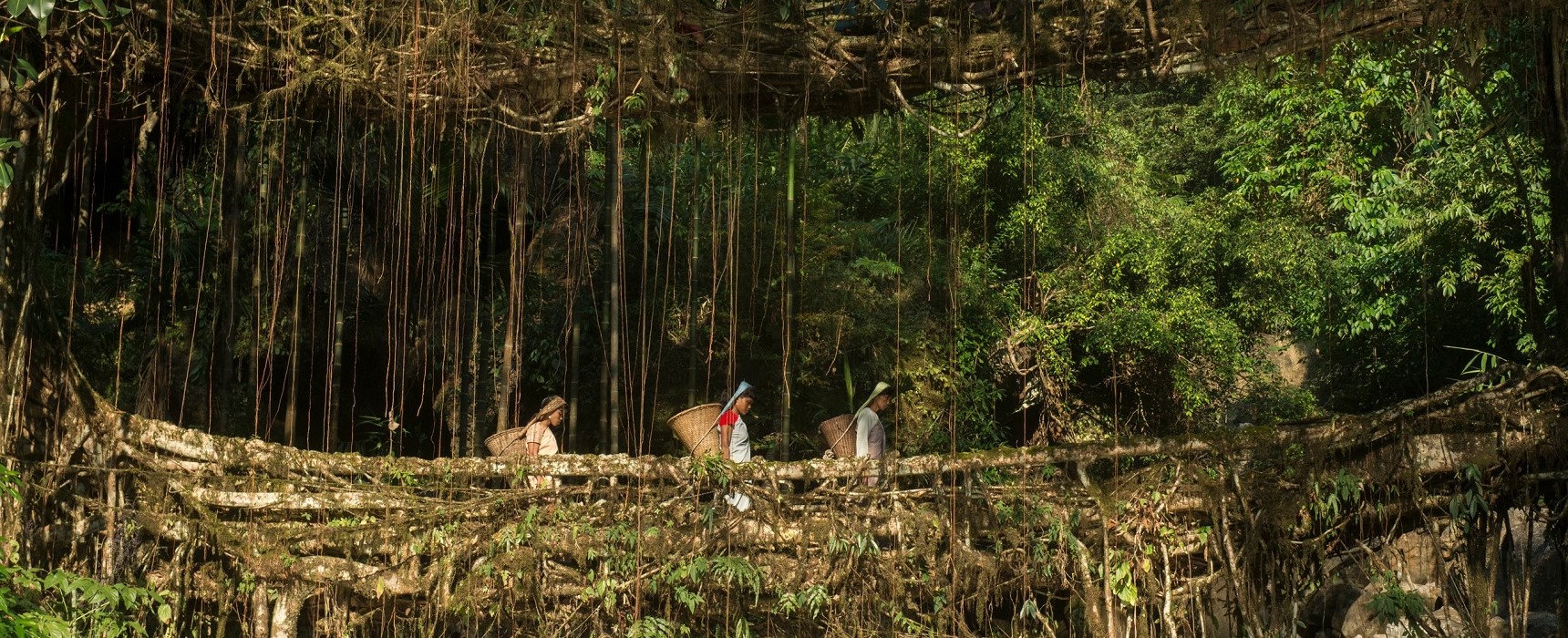IN MEGHALAYA, INDIA—KNOWN AS THE WETTEST PLACE ON EARTH—THE KHASIS HAVE TRAINED RUBBER FIG TREES TO GROW INTO BRIDGES ACROSS RIVERS DURING MONSOONS AND HEAVY RAINS. BEYOND THEIR UTILITY, THEY ARE VISUALLY STUNNING AND HAVE BECOME A SYMBOL OF HOW HUMANS CAN WORK WITH, NOT AGAINST, NATURE. PHOTO, PUBLISHED IN VOGUE, BY PETE OXFORD / COURTESY OF TASCHEN, PUBLISHER OF LO―TEK. DESIGN BY RADICAL INDIGENISM BY JULIA WATSON.
Regenerative design has become a hot topic in industrial design, architecture, and systems design circles. Yet these conversations and solutions rooted in design having a symbiotic relationship with nature too often minimize or exclude the knowing and contributions of Indigeneous designers.
Design history begins with Indigeneous design and regenerative design principles spring from Indigenous cultures across the globe. Below we’ve compiled a non-exhaustive list of resources to help you begin to understand why Indigenous designers and their worldviews should be honored and central to designs seeking to preserve Earth’s precious resources, in order to build a more equitable and sustainable future for all.
Read the full digital issue of IDSA’s INNOVATION magazine:
“Decolonizing Industrial Design”
For more reading on Indigenous design:
- What Designers Can Learn from Indigenous Communities Fighting Climate Change
- “Seeing Energy-Efficient Buildings as a Matter of Climate Justice,” interview with Wanda Dalla Costa
- Hidden Canada: Indigenous Design and Sustainability in the First Peoples House
- Douglas Cardinal: Architect of the Future
- One Man’s Trash Is Brian Jurgen’s Treasure
- On Indigenous Peoples’ Day, Revisiting the Meaning of “Native Architecture”
- Respectful Design: Decolonization as an Urgent Imperative
- “Colonized Design” by Ana Mengote Baluca, IDSA
- We May Already Have the Technology to Survive a Climate Crisis—We’ve Just Been Ignoring It – on Julia Watson’s book Lo—TEK: Design by Radical Indigenism
- ASU Graduate Selina Martinez Highlights the Influence of Indigenous Worldviews on Architecture
- “Our isolation makes us resourceful” : A New Zealand design guide
- Indigenous Architects Breaking New Ground
- The People Are Beautiful Already: Indigenous Design and Planning
- A Message from Indigenous Leaders: Why Regenerative Agriculture Is Not Enough
- Interview with Brian Skeet, IDSA
